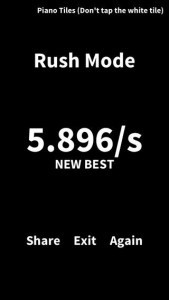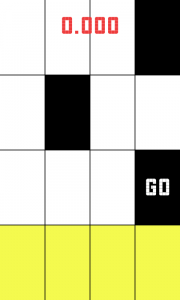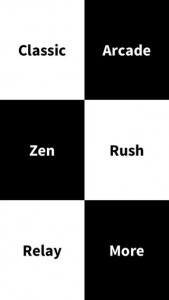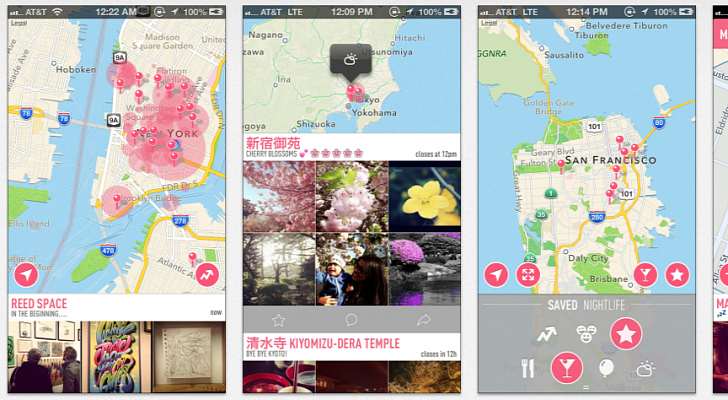I just downloaded a game called piano tiles. Its a very simple speed based tapping game. It was most probably made by a developer without the help of a designer because it is pretty plain.
The game could be improved with some simple touches, for instance you are supposed to touch the black squares on a grid, but just bringing some color and texture into the grid to make it more inviting could give the app a new life.
Also, there is little to no variation on the type used throughout the application, some visual hierarchy would have been nice. You can’t really differentiate the buttons from what is just text that is on the screen. Simply making all of the buttons be one color would have been an easy solution, perhaps the same color as the squares you are meant to tap.
The score is just kind of displayed on the top of the screen, center justified, but doesn’t feel like it belongs. Additionally, once the round ends, at the top of the screen it says ‘Piano Tiles (Don’t tap the white tile)’, while I commend the created for saying tap instead of click, it is awkwardly positioned and it is the only thing in the whole app that is right justified. Also, it is displayed after you have stopped playing rather than before you begin.
Right now the application is not pleasant to look at, and that makes me not want to play it. With the addition of nice colors and animations, along with a more careful choice of typeface and visual hierarchy the app would be more pleasant making me feel happy (the feeling I typically want to feel while playing a game). Because the user is rushed to tap fast, it easy to become anxious playing this game, but with some more design consideration that can be changed.
Regardless of what I mentioned, the app is still super successful.


Samir

